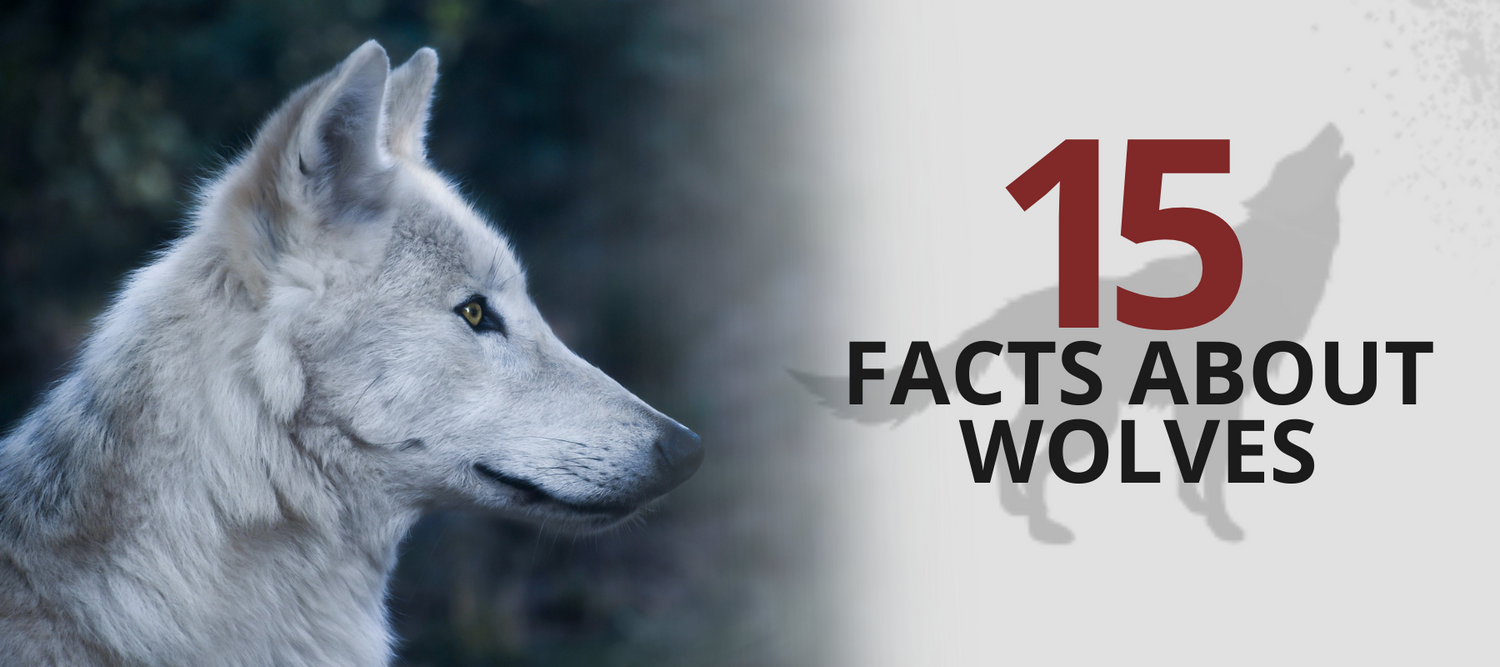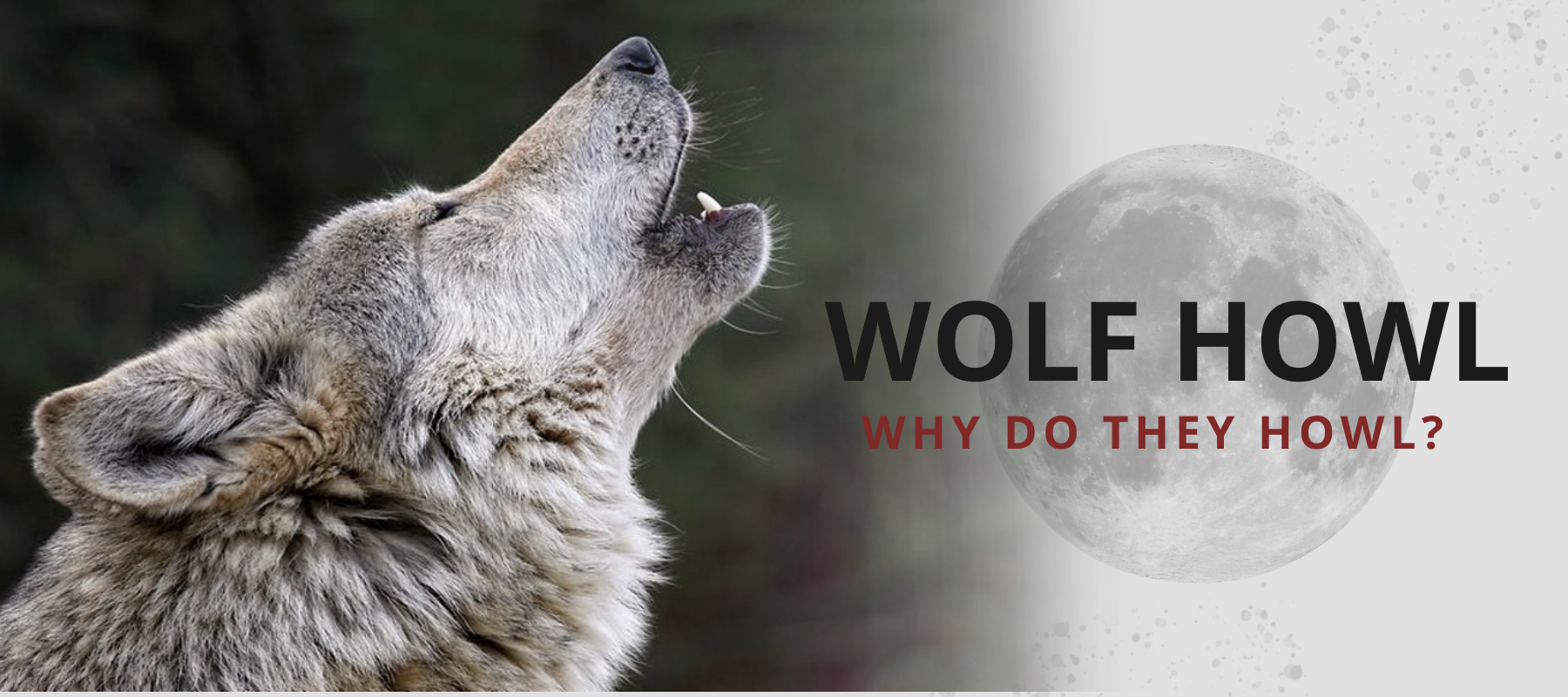Do you really know wolves? Here are 15 facts about the wolf!
1. The Wolf is shy
Grey Wolves are extremely shy. Scavengers on the battlefields, wolves have in past centuries earned a reputation of "man-eaters". However, they do not hunt humans. They tend to move away as soon as they detect our scent. Sometimes a rabid wolf can enter a town and bite a person, but this is an extremely rare occurrence.
2. A Hybrid Canid Species
Dogs are not descended from the Grey Wolf, but from a species that became extinct about 30,000 years ago. Crosses occurred between Canis Lupus, which is why today there are wolf-dog hybrids containing Grey Wolf genes.
3. Extraordinary Eyes
Wolves are born with blue eyes that gradually turn green and then amber yellow or dark brown. An adult wolf never retains blue eyes. If you see a wolf with blue eyes it is a Wolfhound hybrid (often a hybrid with a husky).
In addition to having an extraordinary pigmentation, their eyes have incredible faculties. Although they have superior vision, they do not perform to see very far, so their hearing and sense of smell help. What makes their vision superior to ours is their ability to detect movement in the dark, which is not our case.

4. A powerful jaw
The pressure force of a wolf's jaw is about 184 kg for a 45 kg wolf. They have 42 teeth that can exert a pressure of more than 105 kg/cm² which is more than 12 times the force of a human bite.
The back teeth, called carnivorous teeth, are the sharpest. Wolves use their teeth to break bones, to catch, kill and eat their prey.
5. A Faithful Canid
Once a wolf has found a mate, they tend to stay together for better or for worse, through sickness and health, often until they die. Of course, it is usually only the alpha males and females that reproduce, leaving the rest of the adult members of the pack to help raise the young and ensure their survival.
In addition to their monogamy, wolves develop such strong social bonds for their families and loved ones that they are known to sacrifice themselves for the survival of the pack and the family unit.
6. An Important Family Hierarchy
As we all know, Wolves have a very special pack dynamic, one of the things that attracts us to them. Their family hierarchy is similar to that of humans. The pack is led by an Alpha couple. The other members, who are mostly descendants of the Alpha pair, respect the authority of the leaders.
7. Pampered cubs
When there are cubs, the pack builds a den to protect the young until they are independent. A wolf constantly ensures the safety of the cubs in the den while the others go hunting. As the Cub Cubs grow and reach breeding age, some will leave the pack and create their own.

8. A powerful predator
Wolves are among the carnivores at the top of the food chain in the animal kingdom. They have very few predators. To this day, their greatest threat remains Humans, who participates in the destruction of their natural habitat and engages in the hunting (often forbidden) of these majestic animals. This is the reason why Wolf Lovers participate to wolf preservation by making monthly donations to support wolf protection programs.
9. The Surprising Smell of the Wolf
The sense of smell of wolves is 100 times better than that of humans. Wolves can smell their prey up to 1.6 miles (2 km) away. They can also determine the age and sex of other wolves at that distance. This helps them avoid other packs.
10. The Incredible Hearing of the Wolf
Their hearing is 16 times better than that of a human being. They can hear up to 5,6 miles (9 km) in the forest and 10 miles (16 km) in open areas. Finally, they can hear their fellows several miles away.
11. A Smart and Enduring Canid
Wolves generally walk at 6 km/h, trot between 12 and 19 km/h and run and hunt at 56 km/h. However, they do not run at full speed until they are close to their prey. They tire their prey by running for hours, sometimes up to 59 miles (95 km). This weakens the hunted animals so that they can easily catch them.

12. The large family of Canis Lupus
Among wolves, two species are identified: Canis lupus (often simply called "gray wolves"), which includes 38 subspecies, such as the Arctic wolf, Canadian wolf or the Arabian wolf.
The other listed species is the red wolf (Canis rufus), which are smaller and have shorter legs and short-haired fur. Many scientists are still studying the dissimilarities of the species and regularly update the wolf's classified species and subspecies.
13. Wolves are very good swimmers
Wolves can swim distances of up to 8 miles(13 kilometers) with the help of small flippers between their toes.
14. The wolf's footprint is as big as the size of a man's hand
If you've never seen a real wolf's paw print, then be prepared to get goosebumps, because their average size is comparable to that of an adult human hand, 13 centimeters wide by 13 centimeters long.

15. Wolf Hunger
Wolves can eat an enormous amount, up to 19 lbs (9 kg), in a single meal. The alpha male is the first to eat and will devour the most meat of the pack, followed by the other pack members and other scavengers.
Although this is partly responsible for their bad reputation, it is actually a survival tactic, as they never know when their next meal will be and it is often a few days before they eat again.
Which one of these facts about the wolf has surprised you the most?
If you want to learn more about wolf behavior, don't hesitate to read our blog post to discover how does a wolf pack work?



